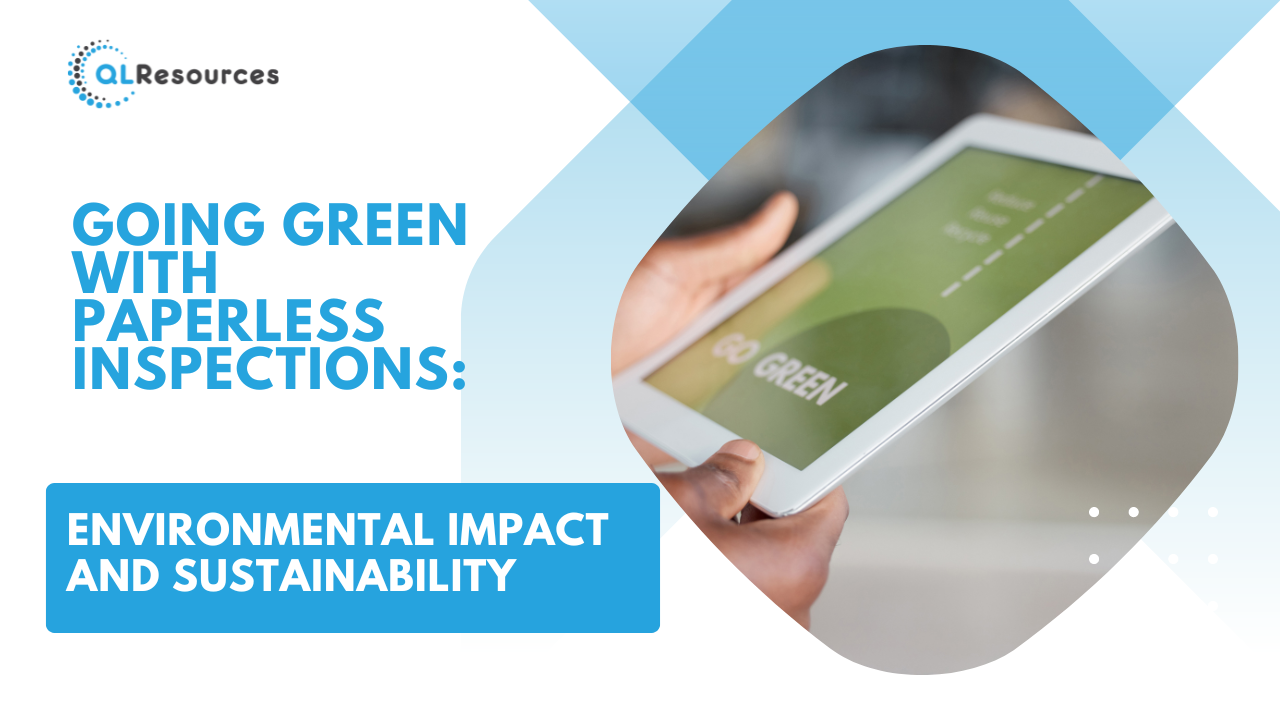
Transitioning from traditional paper-based inspections to digital, paperless inspections not only streamlines processes but also contributes significantly to environmental sustainability. This article explores the environmental impact of paperless inspections and highlights the benefits of adopting digital solutions for inspections.
1. Reduction in Paper Consumption:
One of the primary benefits of paperless inspections is the significant reduction in paper consumption. By eliminating paper forms, checklists, and reports, organisations save trees and reduce the environmental footprint associated with paper production, transportation, and disposal.
2. Energy Savings and Carbon Footprint Reduction:
Digital inspections conducted on mobile devices or tablets consume less energy compared to printing, copying, and storing paper documents. Reduced energy consumption leads to lower carbon emissions, contributing to climate change mitigation efforts.
3. Waste Reduction and Landfill Diversion:
Paper-based inspections generate waste in the form of used paper, disposable forms, and outdated documents. Going paperless minimises waste generation and promotes recycling practices. It also diverts waste from landfills, where paper waste contributes to methane emissions and environmental pollution.
4. Improved Efficiency and Resource Optimisation:
Digital inspection tools and software streamline the inspection process, leading to improved efficiency, faster turnaround times, and optimised resource utilisation. Inspectors can capture data electronically, attach photos, record observations, and generate reports in real-time, reducing the need for paper documentation and manual data entry.
5. Remote and Mobile Capabilities:
Paperless inspection solutions often offer remote and mobile capabilities. Inspectors can conduct inspections in the field using mobile devices, access digital checklists and guidelines, sync data instantly with centralised systems, and collaborate with teams without relying on paper-based forms or physical storage.
6. Data Accuracy and Compliance:
Digital inspections enhance data accuracy and integrity. Built-in validation checks, digital signatures, and automated workflows ensure compliance with standards, regulations, and audit requirements. Accurate data collection and reporting contribute to better decision-making and regulatory compliance.
7. Cost Savings and Operational Efficiency:
Beyond environmental benefits, paperless inspections result in cost savings and improved operational efficiency. Organisations save on paper procurement, printing costs, storage space, and administrative overhead associated with manual paperwork. Digital solutions also reduce the risk of errors, delays, and lost documents.
8. Scalability and Scalable Solutions:
Digital inspection platforms are scalable and adaptable to various industries and inspection types. Whether in manufacturing, construction, healthcare, or environmental monitoring, paperless inspections offer scalable solutions that align with sustainability goals and modernisation strategies.
Conclusion:
Going green with paperless inspections aligns with sustainability initiatives and environmental stewardship. By embracing digital technologies, organisations not only reduce paper waste, energy consumption, and carbon emissions but also improve operational efficiency, data accuracy, and compliance. The transition to paperless inspections represents a significant step towards a more sustainable and digitally empowered future, where innovation and environmental responsibility go hand in hand.